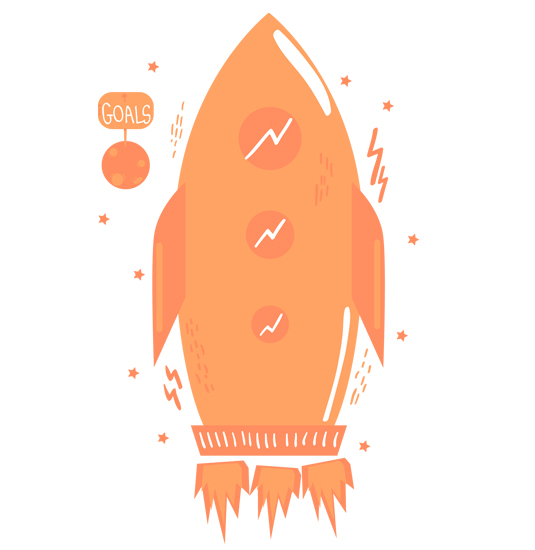10 ways to make your illustrations stand out
How do you get noticed in a crowded and noisy marketplace? Adam Cairns offers some ideas about how to get attention and start reeling in the commissions...
In the ever shifting and changing world of illustration it can be difficult to even get noticed amongst the crowds of painters and doodlers, never mind be successful.
With everyone fighting for the same jobs and the incredible client lists that accompany them, those with the greatest talent in the world can find it hard to be seen.
But fear not; there are things an illustrator can do to combat such problems and catch the attention of those all important clients.
- Read all our illustration-related articles here
01. Avoid the trends

Every so often in design, trends will appear; whether this is in the way designers work or in, for example, the subject matter that is being used in pieces. One of the most important and key things that an illustrator can do is completely avoid the trends altogether.
If you are putting out the same kind of work as thousands of other artists, you are offering nothing new or different to prospective clients. The client you've lost will most likely then go for the designer doing the same sort of things as you, but completely under-pricing and devaluing their services.
The best way to get around this problem is simple : set your own trends. This of course allows for your work to appear unusual next to the rest of the 'average' illustrators following the current trends to the letter. You must always though, in your new found pioneering ways, remember to remain relevant!
02. Know your audience
It's of the utmost importance that as an illustrator you know your target audience - in this case, your clients.
When you start out, or indeed if you have been in the industry a while and are struggling with which jobs to go for, you should take some time to sit down and work out where you can see your work being used. This can be down to many factors: your style of art and what it is appropriate for, what you enjoy doing most, and the subjects and colours you enjoy using.
For instance, if you work in one particular style all the time it's very unlikely that that style will be suitable for both illustrations in a children's book and an album cover for a death metal band. Take your time to work out who will be seeking out your work, and tailor your marketing approach to that particular client base. This will avoid you being completely lost and confused in future as to why certain companies just won't hire you for certain types of work.
03. Colour is key
It's all very well focussing on your approach to the way you present your art and how you market it - but what about the actual art itself? Colour is a massive factor in the design industry and can set the tone of a whole piece. Tailor your choices of colour, or lack of colour, around what you want to achieve.
Going back to my earlier example, if you want to make a living doing work for death metal bands don't use bright luminous colours in all of your work as that simply isn't what your client base is looking for.
As a more general point, bright colours aren't necessarily the best way to go in terms of "my piece is brighter than my competition's, it will be more easily seen". You will fair much better with a colour palette that is well-balanced and carefully chosen.
04. Get your work out there

A good creative will not only know how to present their art on the canvas, but also the best ways to market and share it through avenues like social media. It is impossible to ignore the leverage that a designer with expert knowledge on social media has over a designer with none.
This modern technology is every designer's key to gaining more attention and more followers of their work - you just have to know how to use it properly. The sites that I've personally found are best to use are Facebook, Twitter, Tumblr, Pinterest, LinkedIn, Dribbble and Behance. Regular updates to your followers about your work - without being 'spammy' and interesting content will help you build up a great following, which builds up your credibility as a business. Contests are great to run on Twitter and Facebook to gain more attention, and you never know who might see your work.
Postcards are also another way of telling people about what you do. A beautifully designed postcard with simple contact details can go a long way in the hands of the right art directors - so get posting! If you'd rather not pay for postage, e-mail campaigns are a great way to reach out to numerous clients and present your work to them at no cost.
05. Websites ARE important
In the age of technology there is not a company out there who will succeed big-time without a website, and because an illustrator is very unlikely to make a living doing just solely local-area jobs - a good website is so important.
It is easy to forget that although for many people this job is their passion, it is a business also, and poorly presented work or a website that is hard to navigate or altogether doesn't work, can lose clients and the website's audience extremely quickly. For illustrators a flashy website is not always the best solution - more often than not, simple is best - you want companies to be focussing on the work itself, not on how to find the work or find information about you.
If you aren't able to build your own website, services such as CargoCollective and Behance's Prosite are a good alternative for illustrators. But if possible it is worth designing the site yourself and paying another freelancer to do the coding for you. A good website showcasing your work can put you ahead of your competition and win you commissions.
06. Set goals

Why are you doing what you're doing? What is your aim, where do you want to go in life? It is key in any industry to set goals for yourself and your work. Got a particular dream client you want on your list? Set a time-scale (a reasonable one) and work towards that.
Goals like these will help anyone improve at a steady rate and become better at what they do, simply because of incentive, there is a prize at the end of the hard work and they want it. Keep in mind to make these goals you set things that you really want - if there's nothing you really want out of what it is you're doing, chances are you're doing the wrong thing.
By showing this hunger and desire to get what you want you will improve and stand out from the crowd. It's always better to see someone who is passionate about what they do, rather than someone doing it because they have to or solely for the money.
07. Create a brand
A great way to get yourself noticed around the web is creating a brand image for yourself - make it a business, make it competitive. In the eyes of the client, this is much more professional than one person sitting in their room or office, just drawing.
This is a brand, a well established company that they can trust. A solid and reputable brand image can put you leagues in front of your artistic competitors, and attract the bigger clients that need to deal with people who take things seriously, and that they can trust to do a good job.
Make sure this image is consistent in it's approach, and make sure it is tendered to the target audience that you should have already figured out.
08. Present yourself and act professionally
Image is important in any competitive industry and professionalism can set you apart from the amateurs. It is easy to slip up on platforms such as social media and damage your reputation, which in turn can put clients off. Always remember to appear professional when talking about your business and your work. If you want to swear on Twitter, create a separate, personal account, and swear to your heart's content - just make sure your business' audience can't see it.
An illustrator who appears confident, professional and appears to know what they're doing will be hired over someone with the same standard of work, but zero professionalism. Presenting your work in a professional way to clients, rather than just sending files over, can really go a long way and leave them feeling as if their design problem is in the hands of a capable individual.
Making clients feel this way about you and your work will set you apart from others in the industry who aren't making this effort.
09. Be a leader

As mentioned, it is beneficial for you to avoid the current trends and go with your own feelings. It is also a good idea to actually start up your own clever projects and ideas that perhaps have never been seen before or that solve a problem.
Appearing as a wolf among the sheep can really boost not only your audience and client base, but your reputation as well. Taking initiative is a key skill that you will need in the industry and that is sought after by every potential employer.
A good way, if you're low on funds, to start a project that you really believe in is by using Kickstarter and rallying people to support you - which is where being professional in your approach and presentation can help your efforts.
10. Stay open
Finally, always stay open to new ideas and new ways to go about your work - experimenting can go a long way and lead to you finding new styles to play with, opening up numerous new potential clients and audiences.
Being an expert in one style of work is one thing, but it is always nice to see in the design world a creative who likes to push the boundaries and find new things. This is an attractive feature for anyone and will always help towards your work shining through the crowd.
Words and illustrations: Adam Cairns
Adam Cairns is a designer and illustrator from Scotland. He has been producing illustration work for three years and has worked previously in a studio setting. Follow him on Twitter at @Adam_Cairns.
Liked this? Read these!
- Illustrator tutorials: amazing ideas to try today!
- Free tattoo fonts for designers
- Free Photoshop actions to create stunning effects
- The ultimate logo design guide
- Download free textures: high resolution and ready to use now
Have you any tips to add to our article? Please share them in the comments box below!

Thank you for reading 5 articles this month* Join now for unlimited access
Enjoy your first month for just £1 / $1 / €1
*Read 5 free articles per month without a subscription

Join now for unlimited access
Try first month for just £1 / $1 / €1
Get the Creative Bloq Newsletter
Daily design news, reviews, how-tos and more, as picked by the editors.

The Creative Bloq team is made up of a group of art and design enthusiasts, and has changed and evolved since Creative Bloq began back in 2012. The current website team consists of eight full-time members of staff: Editor Georgia Coggan, Deputy Editor Rosie Hilder, Ecommerce Editor Beren Neale, Senior News Editor Daniel Piper, Editor, Digital Art and 3D Ian Dean, Tech Reviews Editor Erlingur Einarsson, Ecommerce Writer Beth Nicholls and Staff Writer Natalie Fear, as well as a roster of freelancers from around the world. The ImagineFX magazine team also pitch in, ensuring that content from leading digital art publication ImagineFX is represented on Creative Bloq.
